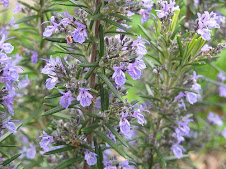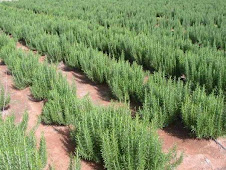Saturday, 21 February 2015
Spices and Herbs for Health Benefits
Spices and Herbs for Health Benefits
Health benefits of herbs and spices: the past, the present, the future.
Herbs and spices have a traditional history of use, with strong roles in cultural heritage, and in the appreciation of food and its links to health. Demonstrating the benefits of foods by scientific means remains a challenge, particularly when compared with standards applied for assessing pharmaceutical agents. Pharmaceuticals are small-molecular-weight compounds consumed in a purified and concentrated form. Food is eaten in combinations, in relatively large, unmeasured quantities under highly socialised conditions. The real challenge lies not in proving whether foods, such as herbs and spices, have health benefits, but in defining what these benefits are and developing the methods to expose them by scientific means.
CULTURAL ASPECTS:
The place of herbs and spices in the diet needs to be considered in reviewing health benefits. This includes definitions of the food category and the way in which benefits might be viewed, and therefore researched. Research may focus on identifying bioactive substances in herbs and spices, or on their properties as a whole food, and/or be set in the context of a dietary cuisine.
THE ROLE OF HERBS AND SPICES IN HEALTH:
The antioxidant properties of herbs and spices are of particular interest in view of the impact of oxidative modification of low-density lipoprotein cholesterol in the development of atherosclerosis. There is level III-3 evidence (National Health and Medical Research Council [NHMRC] levels of evidence) that consuming a half to one clove of garlic (or equivalent) daily may have a cholesterol-lowering effect of up to 9%. There is level III-1 evidence that 7.2 g of aged garlic extract has been associated with anticlotting (in-vivo studies), as well as modest reductions in blood pressure (an approximate 5.5% decrease in systolic blood pressure). A range of bioactive compounds in herbs and spices have been studied for anticarcinogenic properties in animals, but the challenge lies in integrating this knowledge to ascertain whether any effects can be observed in humans, and within defined cuisines. Research on the effects of herbs and spices on mental health should distinguish between cognitive decline associated with ageing and the acute effects of psychological and cognitive function. There is level I and II evidence for the effect of some herbal supplements on psychological and cognitive function. There is very limited scientific evidence for the effects of herbs and spices on type 2 diabetes mellitus, with the best evidence being available for the effect of ginseng on glycaemia, albeit based on four studies. More research is required, particularly examining the effects of chronic consumption patterns. With increasing interest in alternatives to non-steroidal anti-inflammatory agents in the management of chronic inflammation, research is emerging on the use of food extracts. There is level II evidence for the use of ginger in ameliorating arthritic knee pain; however, the improvement is modest and the efficacy of ginger treatment is ranked below that of ibuprofen. More definitive research is required.
PUBLIC HEALTH AND DIETARY IMPLICATIONS:
Recommendations for intakes of food in the Australian guide to healthy eating do not yet include suggested intakes of herbs and spices. Future consideration should be given to including more explicit recommendations about their place in a healthy diet. In addition to delivering antioxidant and other properties, herbs and spices can be used in recipes to partially or wholly replace less desirable ingredients such as salt, sugar and added saturated fat in, for example, marinades and dressings, stir-fry dishes, casseroles, soups, curries and Mediterranean-style cooking. Vegetable dishes and vegetarian options may be more appetising when prepared with herbs and spices.
FUTURE DIRECTIONS:
As several metabolic diseases and age-related degenerative disorders are closely associated with oxidative processes in the body, the use of herbs and spices as a source of antioxidants to combat oxidation warrants further attention. Immediate studies should focus on validating the antioxidant capacity of herbs and spices after harvest, as well as testing their effects on markers of oxidation. This will work in parallel with clinical trials that are aiming to establish antioxidants as mediators of disease prevention. From a dietary perspective, the functionality of herbs and spices will be exposed through consideration of their properties as foods. As with most foods, the real benefits of including them in the diet are likely to emerge with a better understanding of the attributes of health that are best supported by food, and in methodological developments addressing the evidence base for their effects. These developments are well underway through evidence-based frameworks for substantiating health claims related to foods. At present, recommendations are warranted to support the consumption of foods rich in bioactive components, such as herbs and spices. With time, we can expect to see a greater body of scientific evidence supporting the benefits of herbs and spices in the overall maintenance of health and protection from disease.
List of culinary herbs and spices
A
• Ajwain, carom seeds (Trachyspermum ammi) (South Asia, India, Afghanistan, Iran, Egypt, Eritrea & Ethiopia)
• Akudjura (Solanum centrale) (Australia)
• Alexanders (Smyrnium olusatrum)
• Alkanet (Alkanna tinctoria), for red color
• Alligator pepper, mbongo spice (mbongochobi), hepper pepper (Aframomum danielli, A. citratum, A. exscapum) (West Africa)
• Allspice (Pimenta dioica)
• Angelica (Angelica archangelica)
• Anise (Pimpinella anisum)
• Anise Hyssop (Agastache foeniculum)
• Aniseed myrtle (Syzygium anisatum) (Australia)
• Annatto (Bixa orellana)
• Apple mint (Mentha suaveolens, Mentha × rotundifolia and Mentha × villosa)
• Artemisia (Artemisia spp.)
• Asafoetida (Ferula assafoetida)
• Asarabacca (Asarum europaeum)
• Avens (Geum urbanum)
• Avocado leaf (Peresea americana)
B
• Barberry (Berberis vulgaris and other Berberis spp.)
• Basil, sweet (Ocimum basilicum)
• Basil, lemon (Ocimum × citriodorum)
• Basil, Thai (O. basilicum var. thyrsiflora)
• Basil, Holy (Ocimum tenuiflorum)
• Bay leaf (Laurus nobilis)
• Bay leaf, Indian, tejpat, malabathrum
• Bee balm (Monarda didyma)
• Boldo (Peumus boldus)
• Borage (Borago officinalis)
• Black cardamom (Amomum subulatum, Amomum costatum)
• Black mustard (Brassica nigra)
• Blue fenugreek, blue melilot (Trigonella caerulea)
• Brown mustard (Brassica juncea)
C
• Caraway (Carum carvi)
• Cardamom (Elettaria cardamomum)
• Catnip (Nepeta cataria)
• Cassia (Cinnamomum aromaticum)
• Cayenne pepper (Capsicum annuum)
• Celery leaf (Apiumi graveolens)
• Celery seed (Apiumi graveolens)
• Chervil (Anthriscus cerefolium)
• Chicory (Cichorium intybus)
• Chili pepper (Capsicum spp.)
• Chives (Allium schoenoprasum)
• Cicely, sweet cicely (Myrrhis odorata)
• Cilantro, coriander greens, coriander herb (Coriandrum sativum)
• Cinnamon, Indonesian (Cinnamomum burmannii, Cassia vera)
• Cinnamon, Saigon or Vietnamese (Cinnamomum loureiroi)
• Cinnamon, true or Ceylon (Cinnamomum verum, C. zeylanicum)
• Cinnamon, white (Canella winterana)
• Cinnamon myrtle (Backhousia myrtifolia) (Australia)
• Clary, Clary sage (Salvia sclarea)
• Clove (Syzygium aromaticum)
• Coriander seed (Coriandrum sativum)
• Costmary (Tanacetum balsamita)
• Cuban oregano (Plectranthus amboinicus)
• Cubeb pepper (Piper cubeba)
• Cudweed (Gnaphalium spp.) (Vietnam)
• Culantro, culangot, long coriander (Eryngium foetidum)
• Cumin (Cuminum cyminum)
• Curry leaf (Murraya koenigii)
• Curry plant (Helichrysum_italicum)
D
• Dill seed (Anethum graveolens)
• Dill herb or weed (Anethum graveolens)
E
• Elderflower (Sambucus spp.)
• Epazote (Dysphania ambrosioides)
F
• Fennel (Foeniculum vulgare)
• Fenugreek (Trigonella foenum-graecum)
• Filé powder, gumbo filé (Sassafras albidum)
• Fingerroot, krachai, temu kuntji (Boesenbergia rotunda)
G
• Galangal, greater (Alpinia galanga)
• Galangal, lesser (Alpinia officinarum)
• Galingale (Cyperus spp.)
• Garlic chives (Allium tuberosum)
• Ginger (Zingiber officinale)
• Ginger, torch, bunga siantan (Etlingera elatior) (Indonesia)
• Golpar, Persian hogweed (Heracleum persicum) (Iran)
• Grains of paradise (Aframomum melegueta)
• Grains of Selim, Kani pepper (Xylopia aethiopica)
H
• Horseradish (Armoracia rusticana)
• Houttuynia cordata (Vietnam)
• Huacatay, Mexican marigold, mint marigold (Tagetes minuta)
• Hyssop (Hyssopus officinalis)
I
• Indonesian bay leaf, daun salam (Syzygium polyanthum)
J
• Jasmine flowers (Jasminum spp.)
• Jimbu (Allium hypsistum) (Nepal)
• Juniper berry (Juniperus communis)
K
• Kaffir lime leaves, Makrud lime leaves (Citrus hystrix) (Southeast Asia)
• Kala zeera (or kala jira), black cumin (Bunium persicum) (South Asia)
• Kawakawa seeds (Macropiper excelsum) (New Zealand)
• Kencur, galangal, kentjur (Kaempferia galanga)
• Keluak, kluwak, kepayang (Pangium edule)
• Kinh gioi, Vietnamese balm (Elsholtzia ciliata)
• Kokam seed (Garcinia indica) (Indian confectionery)
• Korarima, Ethiopian cardamom, false cardamom (Aframomum corrorima) (Eritrea)
• Koseret leaves (Lippia adoensis) (Ethiopia)
L
• Lavender (Lavandula spp.)
• Lemon balm (Melissa officinalis)
• Lemongrass (Cymbopogon citratus, C. flexuosus, and other Cymbopogon spp.)
• Lemon ironbark (Eucalyptus staigeriana) (Australia)
• Lemon myrtle (Backhousia citriodora) (Australia)
• Lemon verbena (Lippia citriodora)
• Leptotes bicolor (Paraguay and southern Brazil)
• Lesser calamint (Calamintha nepeta), nipitella, nepitella (Italy)
• Licorice, liquorice (Glycyrrhiza glabra)
• Lime flower, linden flower (Tilia spp.)
• Lovage (Levisticum officinale)
M
• Mace (Myristica fragrans)
• Mahlab, St. Lucie cherry (Prunus mahaleb)
• Marjoram (Origanum majorana)
• Mastic (Pistacia lentiscus)
• Mint (Mentha spp.) 25 species, hundreds of varieties
• Mountain horopito (Pseudowintera colorata) 'Pepper-plant' (New Zealand)
• Musk mallow, abelmosk (Abelmoschus moschatus)
• Mustard, black, mustard plant, mustard seed (Brassica nigra)
• Mustard, brown, mustard plant, mustard seed (Brassica juncea)
• Mustard, white, mustard plant, mustard seed (Sinapis alba)
N
• Nigella, kalonji, black caraway, black onion seed (Nigella sativa)
• Njangsa, djansang (Ricinodendron heudelotii) (West Africa)
• Nutmeg (Myristica fragrans)
O
• Olida (Eucalyptus olida) (Australia)
• Oregano (Origanum vulgare, O. heracleoticum, and other species)
• Orris root (Iris germanica, I. florentina, I. pallida)
P
• Pandan flower, kewra (Pandanus odoratissimus)
• Pandan leaf, screwpine (Pandanus amaryllifolius)
• Paprika (Capsicum annuum)
• Paracress (Spilanthes acmella, Soleracea) (Brazil)
• Parsley (Petroselinum crispum)
• Pepper: black, white, and green (Piper nigrum)
• Pepper, Dorrigo (Tasmannia stipitata) (Australia)
• Pepper, long (Piper longum)
• Pepper, mountain, Cornish pepper leaf (Tasmannia lanceolata)
• Peppermint (Mentha piperata)
• Peppermint gum leaf (Eucalyptus dives)
• Perilla, shiso (Perilla spp.)
• Peruvian pepper (Schinus molle)
• Brazilian pepper or Pink pepper (Schinus terebinthifolius)
Q
• Quassia (Quassia amara) (bitter spice in aperitifs and some beers and fortified wines)
R
• Rice paddy herb (Limnophila aromatica) (Vietnam)
• Rosemary (Rosmarinus officinalis)
• Rue (Ruta graveolens)
S
• Safflower (Carthamus tinctorius), for yellow color
• Saffron (Crocus sativus)
o Trade and use of saffron
• Sage (Salvia officinalis)
• Saigon cinnamon (Cinnamomum loureiroi)
• Salad burnet (Sanguisorba minor)
• Salep (Orchis mascula)
• Sassafras (Sassafras albidum)
• Savory, summer (Satureja hortensis)
• Savory, winter (Satureja montana)
• Silphium, silphion, laser, laserpicium, lasarpicium (Ancient Roman cuisine, Ancient Greek cuisine)
• Shiso (Perilla frutescens)
• Sorrel (Rumex acetosa)
• Sorrel, sheep (Rumex acetosella)
• Spearmint (Mentha spicata)
• Spikenard (Nardostachys grandiflora or N. jatamansi)
• Star anise (Illicium verum)
• Sumac (Rhus coriaria)
• Sweet woodruff (Galium odoratum)
• Szechuan pepper, Sichuan pepper (Zanthoxylum piperitum)
T
• Tarragon (Artemisia dracunculus)
• Thyme (Thymus vulgaris)
• Thyme, lemon (Thymus × citriodorus)
• Turmeric (Curcuma longa)
V
• Vanilla (Vanilla planifolia)
• Vietnamese cinnamon (Cinnamomum loureiroi)
• Vietnamese coriander (Persicaria odorata)
• Voatsiperifery (Piper borbonense) [Madagascar]
W
• Wasabi (Wasabia japonica)
• Water-pepper, smartweed (Polygonum hydropiper)
• Watercress (Rorippa nasturtium-aquatica)
• Wattleseed (from about 120 spp. of Australian Acacia)
• White mustard (Sinapis alba)
• Wild thyme (Thymus serpyllum)
• Willow herb (Epilobium parviflorum)
• Wintergreen (Gaultheria procumbens)
• Wood avens, herb bennet (Geum urbanum)
• Woodruff (Galium odoratum)
• Wormwood, absinthe (Artemisia absinthium)
Y
• Yellow mustard (Brassica hirta = Sinapis alba)
• Yerba buena, any of four different species, many unrelated
Z
• Za'atar (herbs from the genera Origanum, Calamintha, Thymus, and Satureja)
• Zedoary (Curcuma zedoaria)
































